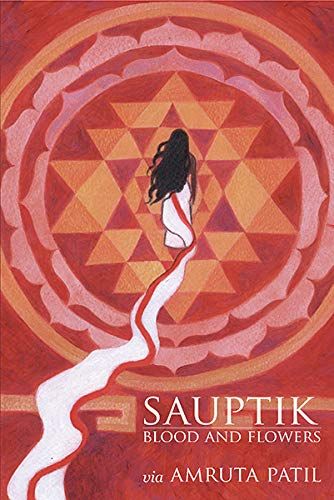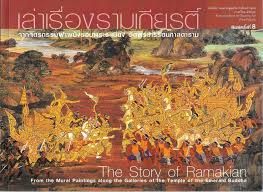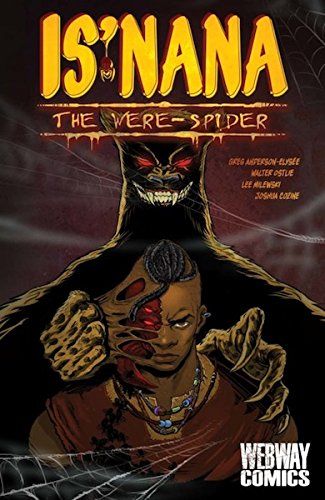What I’m going to do in this A–Z is look at fairytales, folktales, and myths from a different direction (and a couple of different angles): I’m going to look at stories that are either western in origin that have been reimagined through other lenses, stories that were coopted and have now been retold by the people to whom they originally belonged, or upcoming stories about which I’ve noticed people voicing concerns for culturally linked reasons. There do seem to be some cross-cultural ur-stories (e.g. great floods, the taming of primordial chaos, and, oddly, vampires?) that I’m planning to stay away from since they’ve already been fed through a truly staggering number of cultural lenses. If I tend toward manga it’s because that’s what I’ve read most widely in comics originating outside of the U.S. so far, but I am actively working to widen my perspective and hey, if you have any recommendations, please send them to @BookRiot.
E: Engkanto/Engkantada
Trese by Budjette Tan and Kajo Baldisimo (New Edition 12/15)
Modern day Manila is just like any other city in many ways: technology and convenience coexist with shadowy corners and crime. If you wander into those shadowy corners, whether accidentally or deliberately, you may find yourself facing demons. What’s different? Some of the demons are figurative, but in Budjette and Baldisimo’s world many of them are literal, including the engkanto, environmental spirits who can slip through the cracks between their reality and ours, who can bring good luck or ill depending on how humans have treated them in the past. If they were treated kindly, the engkanto might provide assistance. If not, they might steal your most prized possession. The good news is, when crime has a supernatural element, the Manila Police Department can call on their resident expert, Alexandra Trese.
A new edition of Trese‘s first volume is due out next month and Netflix has announced plans for an anime.
F: The Fall
The Devil is a Part Timer! Vol. 1 by Satoshi Wagahara and Akio Hiiragi
Yeah, I know, I’ve mentioned The Devil is a Part Timer! a lot lately but it’s been a bright spot in the hellscape of 2020 (ironically) so…I’m gonna go with it. In this version of Satan’s story he doesn’t so much Fall as make a strategic withdrawal to regroup and find out he sort of likes being human. He likes his job. He likes having friends. He even likes the crappy apartment he shares with an increasing number of weirdos and beings who have tried to kill him. And who burn through Alciel’s carefully regimented budget via online shopping. And somehow maintain goofy purple mullets. The anime is pretty cute, too, and I could lie and say I was a grownup about portioning the 13 episodes out but I burned through the entire single season the Saturday after the election when my brain came to a screeching halt, and I giggled a lot. It was better than the same week’s episode of The Mandalorian which I only half paid attention to. Recommend.
G: Ganesha
Sauptik: Blood and Flowers by Amruta Patil
The sequel to Patil’s Adi Parva, Sauptik contains the second half of the Mahabharata. While the writer and artist chose to have the spirit of the Ganges narrate her first book, in Sauptik it is Ashwatthama, who fought against the Pandavas and slaughtered most of their camp in a single night using sacred weapons, who spins the tale. The Pandavas and Krishna, who were away during the massacre, return to find the devastation and track Ashwatthama down at Sage Vyasa’s ashram. As punishment for his unconscionable deeds, Ashwatthama is cursed not to die but to survive and suffer for 3000 years.
Where does Ganesha come in? Legend says that Sage Vyasa, to whose ashram Ashwatthama fled and at which he was found by the Pandavas, dictated the story to Lord Ganesha who recorded it so that it could be passed down to future generations.
H: Hanuman
The Story of the Ramakian: From the Mural Paintings Along The Galleries of the Temple of the Emerald Buddha
The Ramakian (the Indonesian version of the Ramayana in which Hanuman plays a much larger role and is quite the cad) mural series in the Wat Phra Kaew Temple wins the record for “World’s Longest Painting.” Because the scenes in this masterwork are sequential, an article on comicbookbin.com points out, the mural can also be considered the world’s longest comic. Commissioned by Rama I after his coronation, the work is made up of five hundred panels, each representing one of the scenes from the epic, and has been brought to life in both classical Indonesian dance and, in 2019, animation.
I: Is’nana
Is’nana the Were-Spider, Vol 1: Forgotten Stories by Greg Anderson Elysse, Lee Milewski, and Walter Ostile
Is’nana, the son of Anansi, can also transform into a spider. Which is probably a good thing since he’s accidentally let a bunch of monsters into our world, and now he has to put them back where they came from. Or so help him.
J: Juju
DayBlack Vol. 1 by Keef Cross (DayBlack Comics)
Though the term “juju” has been coopted into common parlance, it originally applied specifically to a spiritual belief system from West Africa (primarily Nigeria and Cameroon) that incorporated physical objects and spells into religious practice. DayBlack follows the story of Merce, turned vampire 400 years ago while enslaved and now free to wander the city of Dayblack, Georgia, as he will due to heavy clouds of pollution. Tired of killing, he’s made a life for himself as a tattoo artist using his ink and needles as a sort of talisman, a sort of magic, to keep his old life at bay. But dark dreams start to penetrate his magic circle, threatening everything Merce has built. Will his protections be enough or will he become a vicious killer once more?
Source : Comics A-Z: Fairytales, Folktales, and Myths from Engkanto to Juju




















